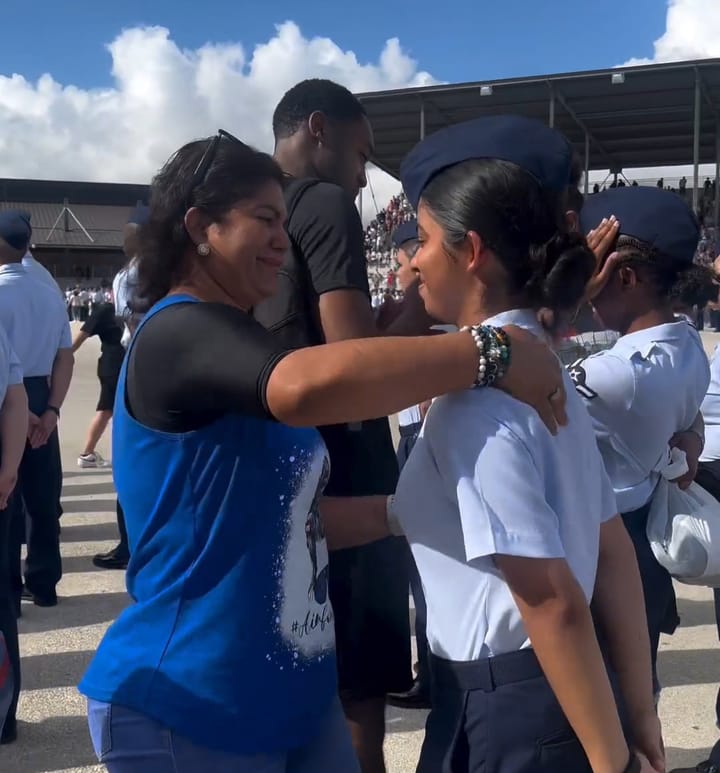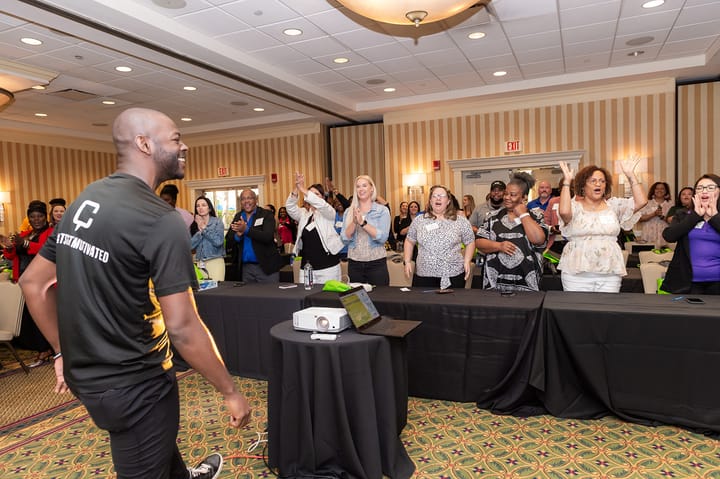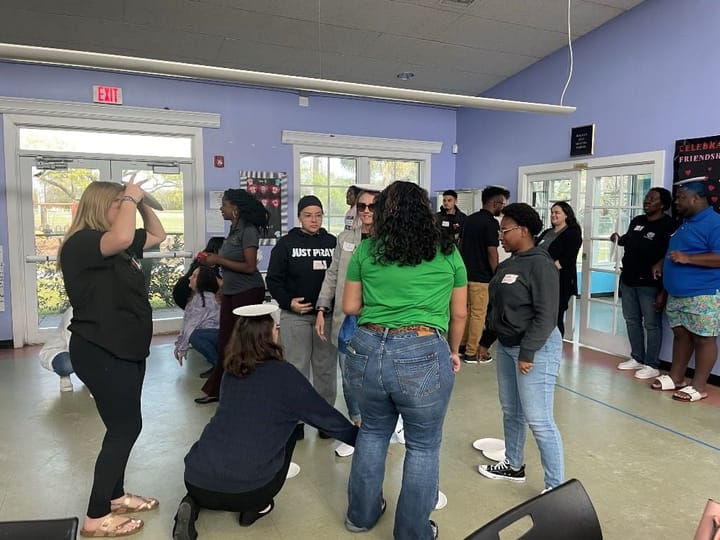What Does OST SEL Coaching Look Like?
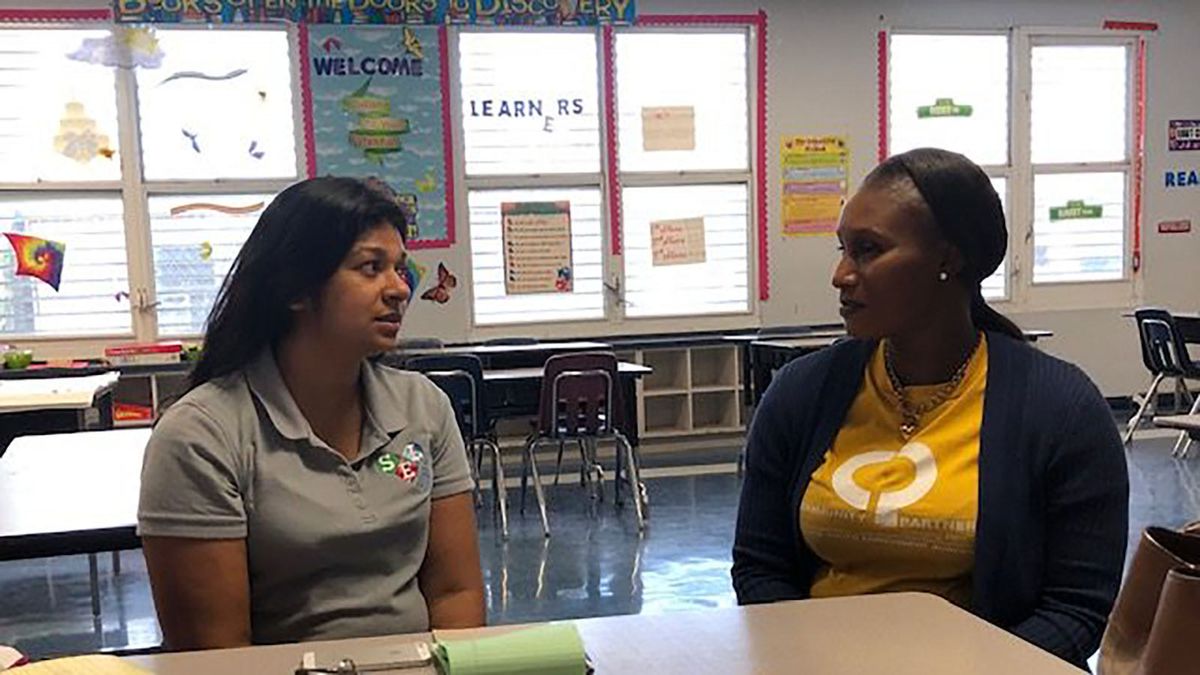
What Does OST SEL Coaching Look Like?
Visit to Pahokee Youth Enrichment Academy – July 16, 2019
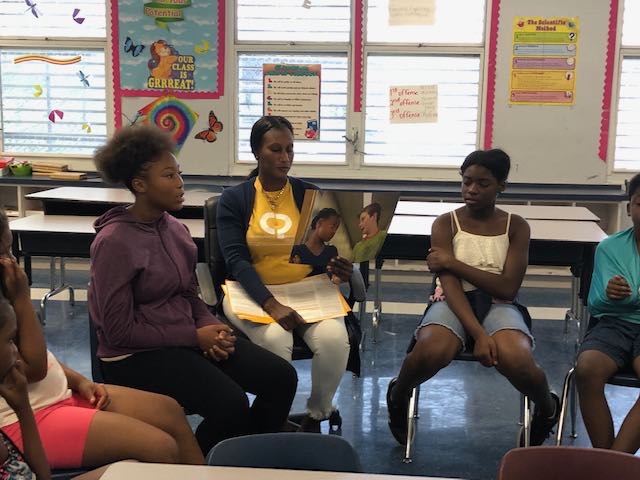
During a coaching session in July at a PSELI Phase 1 site, Prime Time SEL Specialist Knellee Bisram observes Pahokee Youth Enrichment Academy afterschool practitioner Latearya Cunningham (at left, center) facilitating an Afternoon Meeting with summer camp students. In SEL Academy, an eight-session intensive training series designed for OST staff, Latearya practiced incorporating the Second Step curriculum into the Afternoon Meeting. Here, she infuses a Second Step activity designed to develop youth problem-solving skills.
“In the picture, the boy and girl [working to resolve their conflict] look like they’re respecting each other, and the girl’s listening,” Latearya notes. “What are some strategies you can use to problem-solve?” Students readily answer, using cues written on a whiteboard: Stop, name the feeling, breathe, count, and use positive self-talk.
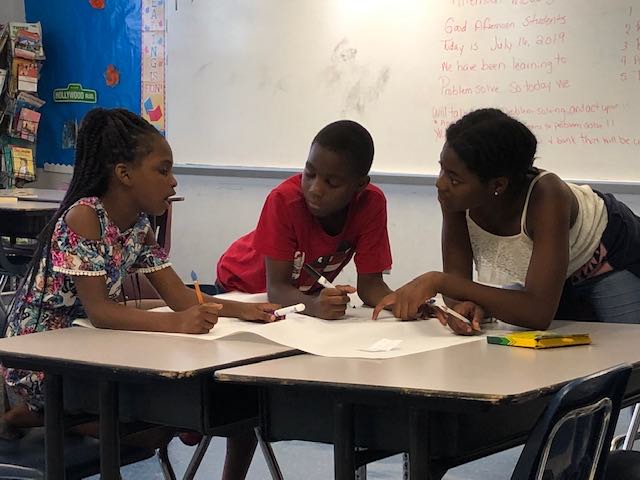
Next, students brainstorm solutions to a problem-solving scenario and prepare to present their ideas to their peers (see right). Latearya encourages them: “Let me hear some talking; share your ideas.”
Students depict (below) an effective problem-solving strategy for resolving a dispute over a ball: “Stop fighting over the one ball. You guys can play with each other.”
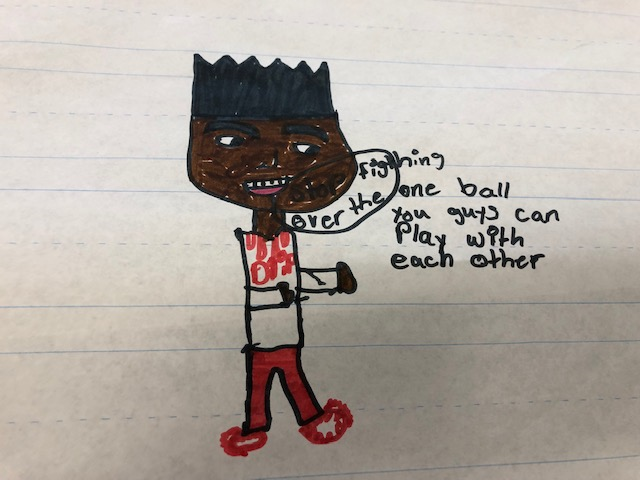
Students also illustrate (below) an ineffective problem-solving strategy for turn-taking on the classroom computer: “I’m going to make her get off.”

Latearya signals the end of the activity with a chime she received through her participation in SEL Academy. This important signal routine is a signature SEL practice she learned in the SEL trainings as a means to help both adults and students become self-aware and self-regulate (return to focused attention and reset) during transitions.
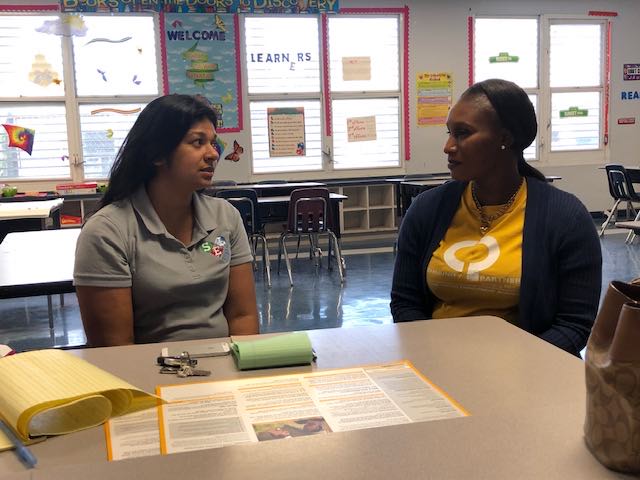
She then leads students to reflect on the activity, a key way of helping youth build the social and emotional competencies of self-awareness and social awareness. Students readily identify additional problem-solving strategies to add to their existing list: calm down, communicate, and give the other person space.
Following Afternoon Meeting, Knellee (left) leads a coaching and reflective debrief session with Latearya. Using a mindful inquiry coaching approach combined with the ORID (Objective, Reflective, Interpretive, Decisional) Focused Conversation Method, Knellee helps Latearya reflect on how she experienced the activity and encourages her to identify aspects of her practice she hopes to tweak for next time.
“How’s your self-care going?” Knellee begins.
“OK,” Latearya says with a laugh. Adult self-care and resilience are a big focus in SEL Academy.
“What went well in this activity?” Knellee continues. Latearya expresses pride in her ability to let students manage their own experience without being told what to do. Encouraging student “voice and choice” is another evidence-based adult practice emphasized in the Academy.
“I was surprised about how much students know [about problem-solving strategies],” she adds. “I find that when problems start, students are now more likely to step to the side [before engaging in conflict].”
Coach and practitioner conclude by naming strategies that Latearya can use in the future:
To help students:
- Students might be given the choice to role-play or present, in addition to the option to draw, their problem-solving strategies.
- Latearya could provide positive reinforcement when youth follow the instructions by focusing on the specific actions they did well.
- She could also end the activity with a “power pause,” giving students an opportunity, through the practice of mindfulness, to regroup mentally, emotionally and physically, and to transition to the next task.
To help herself as the practitioner:
- Latearya might use positive self-talk to “flip” her thinking and skillfully moderate the anxiety she initially felt about rushing students through the activity.
- She could also use a timer visible enough on the board or wall to help her closely manage the timing of activities.
al2

